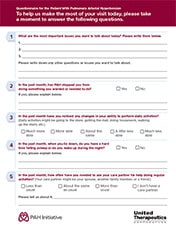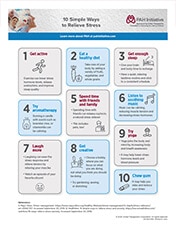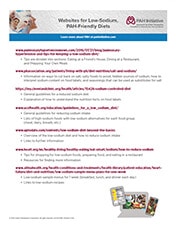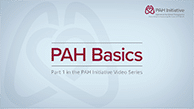The PAH Initiative Learning Library
Home / The PAH Initiative Learning Library
Downloads and educational tools
For more educational materials in Spanish, visit our Spanish language Learning Library page.
Para más materiales educativos en español, visite nuestra página de Biblioteca de Aprendizaje.
Educational videos / Presentations
English-language videos
[Video title: PAH Basics, Part 1 in the PAH Initiative Video Series] Hi, I’m Dr Lana Melendres-Groves, a pulmonary arterial hypertension specialist and director of the pulmonary hypertension program at the University of New Mexico. I have been treating pulmonary diseases for over 12 years with a specialization in PAH for over 9 years. My clinic has treated over 5,000 patients and I currently oversee 250 PAH patients on PAH-specific medicines. In this video, we’ll cover the basics of pulmonary arterial hypertension, also known as PAH. Understanding what PAH is can be confusing because even healthcare providers may tell you different things about it. Some may say your heart doesn’t work as well as it needs to. It’s really about the blood vessels. The real problem is in the lungs or it’s just hypertension. This is why it’s so important to find an experienced PAH specialist to help you. A PAH specialist is a cardiologist or pulmonologist who has had specific training in PAH and understands how challenging this disease really is.
The heart, lungs, and blood vessels all work together as a cardiovascular team and PAH affects each of these vital organs. So let’s start with the heart. You may already know that the heart has 4 chambers. Two chambers are called atria and receive blood from the other parts of the body and the other 2 chambers are called ventricles and pump blood out of the heart. The right atrium receives blue, oxygen-poor blood from the body and the right ventricle pumps that oxygen-poor blood to the lungs where it can pick up oxygen. The left atrium receives red, oxygen-rich blood from the lungs and then the left ventricle pumps the oxygen-rich blood to the rest of the body. Although cardiac diseases, including heart attacks, are more common in the left ventricle, it’s actually the right ventricle that is affected in people who have PAH.
[End of video: PAH Initiative, Sponsored by United Therapeutics, Committed to Improving the Lives of Patients. For more resources about PAH, please visit www.PAHInitiative.com. Copyright 2019 United Therapeutics Corporation. All rights reserved.]
PAH Basics Video
Listen as Dr. Lana Melendres-Groves, a PAH expert, explains the basics of PAH and how the heart, lungs, and blood vessels work together as a cardiovascular team.
Downloads

PAH Symptom Journal
Download this sheet to make it easy to track your symptoms. Knowing your symptoms can help your healthcare provider determine which treatments are right for you.
Download
PAH Patient Questionnaire
This 5-question form can help you plan and initiate focused conversations with your healthcare provider.
Download
10 Simple Ways to Relieve Stress
Some of the ways to relieve stress are obvious, like yoga. But music, gardening, laughter—and even chewing gum—can help you relax and ease your stress.
Download
Low-Sodium, PAH-Friendly Diets
This 1-page guide provides websites full of recipes and tips that can help you cut back on salt. You’ll also learn to understand nutrition labels and find suggestions for those times when you’re dining at a restaurant or with friends.
Download
Healthy Smoothie Recipes
Get more flavor in your diet with nutritious smoothies. These 8 smoothie recipes offer flavors like peanut butter banana, cherry chocolate, and key lime pie.
DownloadFind additional support among the PAH community
Join the PAH Initiative
Sign up to receive updates from United Therapeutics and the PAH Initiative.
Sign Up


